|
Article
Comparing
the Nikon DSLR Cameras Available
February 2009
A camera continues to do what it did when you
bought it, so there is no need to constantly replace it with the latest models
if it does all that you want. There tends to be two views, stay with one camera
until it is so far behind that you feel you need to make a major step and then
the old camera is basically written off, as it then has little value, or upgrade
regularly getting a better second-hand price for your camera which is just one
generation behind. Some also look to get a new camera and keep the older camera
either for a second body allowing more than one lens to be used at a time or to
be taken to locations like the beach or where it is perhaps treated less kindly
and where you would not want to take your best camera. Most professional
photographers want at least one backup camera, and many people have other
members of the family who they would like to hand on a nearly new and well
looked after camera.
The choice of formats
DX format has around 2/3 the area of the larger
FX format. FX is about the same as 35mm. Both formats have some advantages and
some disadvantages. The effect of a DX is similar to sectioning a part out of
the image of the FX, so you have a closer view, and the equivalent of a lens
with a focal length 1.5 times as long, so a FX camera with a 300mm lens will
have the same picture angle (contents) as the DX with a 200mm. The advantages of
the DX is that the long lenses cost far less, the size and weight you carry is
smaller and that depth of field, (the amount that is in focus) is greater,
special DX lenses are available expanding what you can do without an increase in
size. FX is the more expensive option, cameras cost more and so does lenses. You
can use DX lenses, and although you then get the DX camera angle and depth of
field, the megapixels are reduced. The advantages are lower depth of field,
making it easier to throw backgrounds out of focus, and with the D3 the ability
to take photos in very low light levels. If you want a wider angle then its far
cheaper and more useful to buy a wider angle lens.
For most photographers the DX format is the
better choice as you have the increased depth of field and costs are a
fraction of what you will need to spend to get the equivalent FX system.
The choice of models
Currently you have a choice in the, DX
format, (ideal for most people), of the D40, D60, D90, D300, and in the
equivalent to 35mm, FX format, the D700, D3 and D3X.
Also on the second-hand market we will find the
D2X/D2Xs, D2H/D2Hs, D200, D80 and D40x, all in effect one generation behind the current
range and the D100, D70/D70s, and D50 two generations behind.
These are all DX format cameras. Models with an 'S' are mainly a software upgrade and usually the same
upgrade is available via a free firmware update you can do yourself. Their smaller rear
displays are looking rather dated now, however they will still produce
quality photographs, and are available now at a small fraction of the price when
they came out. Perhaps this is the choice for a second camera to take to less
favourable locations like the beach or where security may be a problem. Maybe
also a good camera to play around with remote operation or the D100, D200 or D2H could
be an economic way to get a pair of matching cameras for live action 3D. The D2H
could also be an ideal first camera for a younger person interested in sports
photography or wildlife, it looks and feels like itís the best available, has a
very bright viewfinder, is fast and robustly built. Its only down sides are the
lack of a built in flash and smaller megapixel, although large enough for all
normal uses and can produce a quality 19inch print, perhaps not large enough for
images to go on picture libraries for sale now.
All except the D40, D40x, D50, D60, D80 and D90 use
the larger compactflash cards while these models use the smaller SD cards.
Earlier than this, from 2000, the D1 was
available followed by D1X, and D1H in 2001, all DX format, 2.7 megapixels, these
were sold in far smaller numbers and now 3 generations out of date so I have not
included them further below, beyond including them in the summary.
As you can see we have had 4 generations of
cameras in 8 years. Models in the last few years have had a life expectancy in
the marketing sense of around 18 months. The major Nikon film cameras in the F
series, came out every 8 years, so its far more expensive to keep up to date
with digital.
As later cameras come out, they have general
improvements like lower noise in the pictures, many have dust removal, and more
facilities, but few people get to use all the facilities on their cameras.
Quality wise, a good and well trained photographer can get good images out of
any of them and a poor or untrained one out of none. As the technology
improvements are less noticeable once you reach around the D200, more people
would benefit from training than upgrading once they have got to this point. The
D300 has more facilities, less noise, operates in low light, has dust cleaning,
larger and clearer rear panel, and more, and an improvement on the D200, but as
its been out just over a year now, perhaps another 6 months and we will see a
D400.
At some point it is likely they will bring out
a smaller sensor size, both expanding on the benefits of the DX sensor and allow
smaller cameras to be produced. As sensors have been able to have more
megapixels this is now possible.
Megapixels required
The number of megapixels up to a point are
significant but once you get above a level that allows you to get detail into
the largest print you will ever produce, they then become of far lower benefit, but do
make editing slower, and use up a lot of card and computer space. 10 to 12 megapixels are enough for just about everyone. You can get a 19 inch print out
of just over 4 megapixels. Larger megapixels, as long as the rest of the system
can provide the detail, does allow you to section further, however the D3X an FX
camera with 24.5mp, when using a DX lens produces only 10.5mp, compared to the DX
format of the
D300, that has 12.3mp.
Saving the file in Tiff format produces a
larger file size, allowing most to qualify under picture library requirements with
out having to get very large megapixels and Up-Scaling software will produce
more megapixels for extremely large images when required.
Controls available
The major difference, as you go up through the
models, is the availability of controls on the camera bodies, allowing you to
make changes and be in more control without having to use the menus, beyond this
its more menu choices. The D2, and D3 ranges have considerably larger and
heavier bodies with extra information available.
Summary of the choices, current DX
first, then current FX and then older models now only available second-hand
NOPL = not on Nikon Price list January 2009,
can be considered to all be discontinued.
| Camera |
Status |
Format |
MP with DX |
MP
with FX |
| D300 |
Current |
DX |
12.3 |
Not available |
| D90 |
Current |
DX |
12.3 |
Not available |
| D60 |
Current |
DX |
10.2 |
Not available |
| D40 |
Current |
DX |
6.1 |
Not available |
| D3X |
Current |
FX |
10.5 |
24.5 |
| D3 |
Current |
FX |
5.1 |
12.1 |
| D700 |
Current |
FX |
5.1 |
12.1 |
| D2X/D2Xs |
NOPL |
DX |
12.4 |
Not available |
| D2H/D2Hs |
NOPL |
DX |
4.1 |
Not available |
| D200 |
NOPL |
DX |
10.2 |
Not available |
| D100 |
NOPL |
DX |
6.1 |
Not available |
| D80 |
NOPL |
DX |
10.2 |
Not available |
| D70/D70s |
NOPL |
DX |
6.1 |
Not available |
| D50 |
NOPL |
DX |
6.1 |
Not available |
| D40x |
NOPL |
DX |
10.2 |
Not available |
| D1X/D1H/D1 |
NOPL |
DX |
2.7 |
Not available |
DX
Format
|
The D40 is the only remaining 6
megapixel camera, but megapixels are over sold, you can get a quality print up
to at least 19 inches, if not considerably larger, from this, and few go over this
size.
It is very similar to the D40x, except for the megapixel count. So ideal
as a low cost entry level DSLR, and perhaps to introduce younger photographers. |
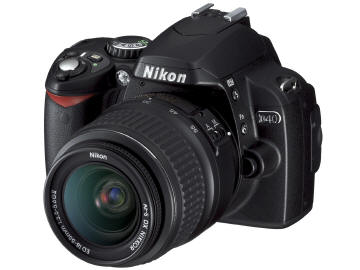 |
| The D40X now
replaced by the D60, a nice small entry level camera. |
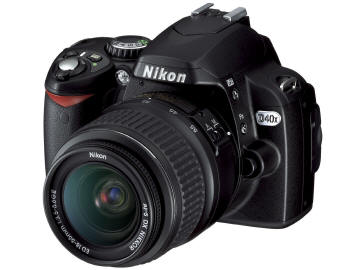 |
| D50 a camera that was
on the market for a very short period of time, being replaced by the D40.
|
|
| D60 an ideal entry level camera, and one
to carry about perhaps when you donít want a full size camera plus a good second
camera body to allow more than one lens to be used at once. Not perhaps the
choice if you are upgrading and have a lot of older lenses or you want something
that is larger and fits your hands better. It is short of a few facilities that
cameras further up the list have. It does however have advanced dust handling
and Active D-lighting allowing a wider tonal range to be covered. It has an
inbuilt flash but no commander, although it will function with an external
commander. Having all the controls on the back screen is slower to operate than
with models with more in camera controls.
This was an upgrade and replacement of the
popular D40X. |
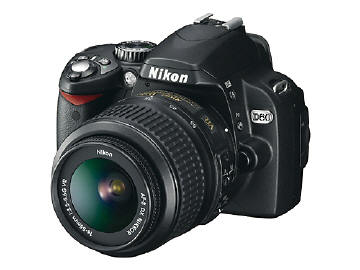 |
| D70 Predecessor
of the D80, but using the same cards as the D100, D200, D300 etc rather than
the smaller SD cards now used by the D80, D90 etc. The rear panel now looks very
small. However these cameras take good photographs. |
|
| D80 was the amateur photographers camera,
enough capability to produce all routine photographs but not over complex to
operate. Ideal for people who perhaps donít regularly use their camera, but
want capability, and allowing some reach into the more advanced areas such as
using creative lighting, as it has a built in flash commander. Lowest camera
that was compatible with lenses that do not have electronic focusing motors, so a
natural upgrade for photographers who have film cameras, or older lenses with
another digital model. A popular first camera for the business executive,
professional or those going on major holidays, safaris and the like. Although
larger and slightly heavier than the D60/D40/D40x, its lightweight compared to
the professional cameras. It does not have the D-lighting and dust
handling. |
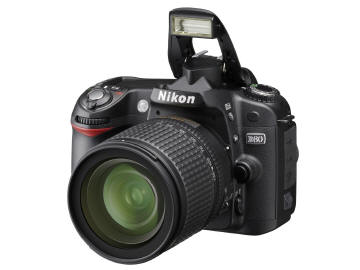 |
| D90 -
The D80 upgraded to have many of the
facilities of the D300, like live view, dust control, ISO up to 3200, Active
D-lighting. Large 3 inch rear display.
New on this model is face detection and D
movie, allowing filming in motion Jpeg format |
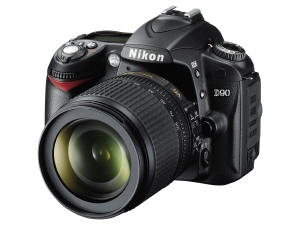 |
| D100 - predecessor of
the D200. It produced good images but is now becoming dated with a small
rear screen. If you use one of these then shoot in Raw and use later
software to improve the results. We would not suggest that you now buy a
D100. |
|
| D200 the enthusiasts camera, has great
capability, and ease of use with controls all available. Although superseded by
the D300, many photographers first real love with digital photography, and widely used by
both enthusiasts and professional photographers. Many professionals feel this
camera produces sharper photos than the D2x and the ideal camera for their
general work. Many did not see the D300
coming and when it first appeared did not think that the D200 needed a
replacement. We had expected to see a flood of these entering the second-hand
market when the D300 was available but it has not happened, indicating
perhaps that this is one that many want to keep, although having a later
model. We still have ours and use it quite a lot. |
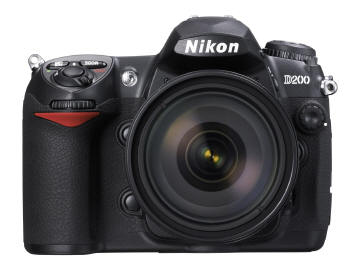 |
| D300 the current top DX camera, with
more features than many will use. A development from the D2x and D200, with many
new facilities, dust handling, better contrast handling with active D-lighting,
Live view on the rear panel in two modes, less or hardly any noise at high ISO
levels, and far more. This and the D3 were the first cameras with a new type of
electronic aperture control, we havenít yet heard much about, but a few new
lenses only operate automatically with this facility. Larger rear panel than
any other DX camera and higher pixel count makes reviewing pictures taken
easier.
Probably the best buy for serious
enthusiasts and definitely most professionals at this time. When it was
announced we didnít see the need initially, the D200 did a fantastic job,
but once we got one and saw the under published benefits we decided to buy a
second and this is the camera we now both use routinely.
|
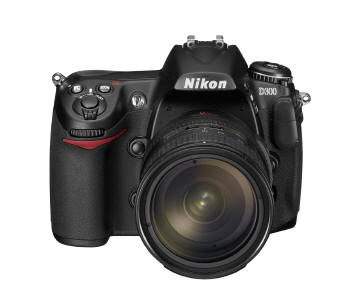 |
| D2H - Came out before the
D2X, and was aimed at the press and for high speed lower light photography,
similar to the D3, which is a replacement for it.
A good buy second-hand for the sports
photographer, or someone wanting a camera to use on remote control that is
robust and who does not need a lot of megapixels.
The appearance is very similar to the D2X. |
|
| D2X the largest DX camera, looks
impressive, is impressive to handle, with extra displays and built in grip. Has a
far larger battery and far more robust, considered by some to be the studio
camera, but ideal for routine press and wildlife type operations, it has a large
brighter viewfinder, more powerful drive for lenses that have a mechanical rather
than electronic focusing arrangement, but no inbuilt flash or controller. Being
larger and more robust it is also heavier. Was more expensive than the D200 or D300.
Replaced by the D3X however I would not be surprised to also find a DX
replacement for this camera announced. Still a good buy for the Professional
photographer who does not need FX format and wants a rugged camera and not
too expensive second-hand. For most the D300, would be a better choice. |
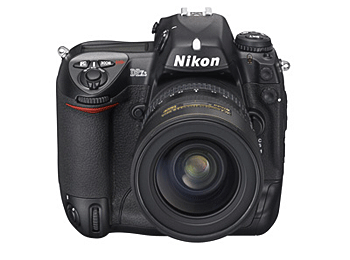 |
FX
Format
| D3X - Currently the
flagship camera in the range The
D3X allows a lot more megapixels (24.5mp) and DX users a similar amount to
a DX camera and perhaps could be considered a dual format camera. However
its expensive, body only listed at a penny under £6,000. It has Liveview,
but no inbuilt flash, commander or dust control.
Look is similar to a D2X with larger
prism/viewfinder, and rear screen. Operation is very similar to a D300.
3 formats, full frame (FX), DX and 5x4,
facilities. |
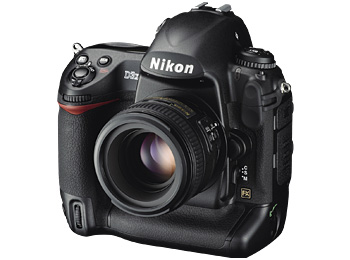 |
| D3 -
The D3 in our view is really a replacement for
the D2h/D2hs and has a similar specification, ideal for press work and
sports. With only 5.1 megapixels when a DX lens is used. The choice for
those with a big budget who want to shoot in the FX/35mm format, and for news
reporters and others who need higher speed. It may appeal to some wildlife
photographers who want to use high shutter speeds, or shoot in low light,
but donít need long telephoto capability.
Like the D2H before it, this is a camera that
is likely to be sidelined by the X version, although currently its £1,500
cheaper than the D3X. We don't consider this camera a good buy. |
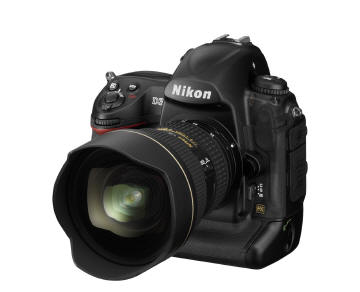 |
| D700 -
The lower priced FX camera, however still over
twice the price of the equivalent DX camera. This is basically a D300 with a
larger sensor, it has a built in flash and dust control, live view, the same
as the D300, but ISO goes one stop higher to 6400 and beyond this to the
equivalent of 25,600, allowing some lower light photography. We are not sold on the benefits of the FX
format. |
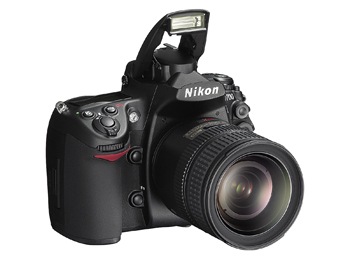 |
So which one is for you
Only ultimately you can decide this, but
perhaps as a guide we could suggest:-
- If you are new to
photography your first choice might be the D300 or if you want a smaller
lighter camera the D60.
- If you are upgrading from
film and have a load of lenses, then the D90 may be interesting but the D300 is
far more exciting.
- If you are not really
excited about photography and want a camera to take on holiday that is not too
large, heavy and not as complicated then look at the D60 or D90.
- If the D300 looks like the
camera for you but you can't justify the price than consider a second-hand D200.
- If you want to create an
income from photography in any way or just make it pay its own way then look
at the D300 first, then perhaps the D200 if your budget is not up to this.
- If you are looking for
a second camera, so it doesnít need all the top facilities then look at the
D200, D80, D60 and D40x. The D60 and D40x may not auto focus all lenses.
- If you want a small format
camera then look at the D60.
- If you want a camera that
you can take on the beach, not worry about loosing and the like consider a
second-hand older model, you can pick up cheaply.
- If FX is something that
you may use occasionally then consider getting a D300 for general use and a D700
for FX use. If its just a wider angle you want then buy a wider angle lens.
See Also our other articles on Nikon DSLR's:
Looking at the
D40x
 as a second camera or a small convenient camera for the briefcase or
handbag.
as a second camera or a small convenient camera for the briefcase or
handbag.
Introduction to the D60,
 NEW Nikon DSLR, launched in 2008. NEW Nikon DSLR, launched in 2008.
FX or DX
Sensors

Nikon DSLR Price
Comparisons

Nikon Lens
Price Comparison

Nikon Flash Units

|